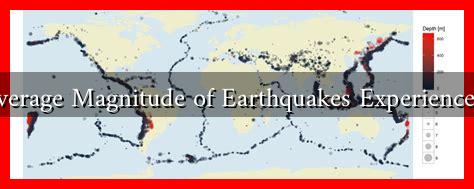-
Table of Contents
What Is the Average Magnitude of Earthquakes Experienced in Lebanon?
Lebanon, a small yet historically rich country in the Middle East, is situated in a seismically active region. The complex tectonic setting of the Eastern Mediterranean makes Lebanon susceptible to earthquakes. Understanding the average magnitude of earthquakes experienced in Lebanon is crucial for disaster preparedness and risk management. This article delves into the seismic activity in Lebanon, examining historical data, average magnitudes, and the implications for the population.
The Seismic Landscape of Lebanon
Lebanon is located near the boundary of the Arabian and Eurasian tectonic plates. This positioning contributes to its vulnerability to seismic events.
. The country has experienced numerous earthquakes throughout its history, some of which have had devastating effects on its infrastructure and population.
Historical Earthquake Data
To understand the average magnitude of earthquakes in Lebanon, it is essential to look at historical data. The Lebanese National Center for Geophysics (LNCG) and various international seismic monitoring organizations provide valuable insights into the seismic history of the region.
- Significant Earthquakes: Notable earthquakes in Lebanon include:
- The 551 AD earthquake, which is believed to have had a magnitude of around 7.0.
- The 1202 earthquake, estimated at a magnitude of 6.5, which caused extensive damage in Beirut.
- The 1837 earthquake, with a magnitude of approximately 6.5, affecting the northern regions of Lebanon.
- Recent Activity: In recent years, Lebanon has experienced several minor to moderate earthquakes:
- A 2019 earthquake with a magnitude of 4.5 struck near the city of Baalbek.
- A 2020 earthquake of magnitude 4.0 was recorded in the region of Mount Lebanon.
Average Magnitude of Earthquakes in Lebanon
Based on historical records and recent seismic activity, the average magnitude of earthquakes experienced in Lebanon typically ranges from 4.0 to 6.0. However, the country has the potential for larger seismic events, as evidenced by historical records of significant earthquakes.
According to the LNCG, the average annual seismic activity in Lebanon includes:
- Minor earthquakes (magnitude < 4.0): Approximately 10-15 events per year.
- Moderate earthquakes (magnitude 4.0 – 5.0): About 3-5 events per year.
- Strong earthquakes (magnitude > 5.0): Rare, occurring approximately once every 10-20 years.
Implications for Disaster Preparedness
The seismic activity in Lebanon has significant implications for disaster preparedness and risk management. The Lebanese government, along with various NGOs, has been working to improve earthquake resilience through:
- Public Awareness Campaigns: Educating citizens about earthquake preparedness and safety measures.
- Infrastructure Improvements: Retrofitting buildings and bridges to withstand seismic forces.
- Emergency Response Plans: Developing and practicing emergency response strategies to minimize casualties and damage.
Conclusion
In summary, Lebanon’s average earthquake magnitude typically ranges from 4.0 to 6.0, with historical records indicating the potential for larger seismic events. The country’s unique geological setting necessitates ongoing efforts in disaster preparedness and infrastructure resilience. As Lebanon continues to navigate its seismic challenges, public awareness and government initiatives will play a crucial role in safeguarding its population against future earthquakes.
For more information on earthquake preparedness, you can visit the Ready.gov Earthquakes website.





